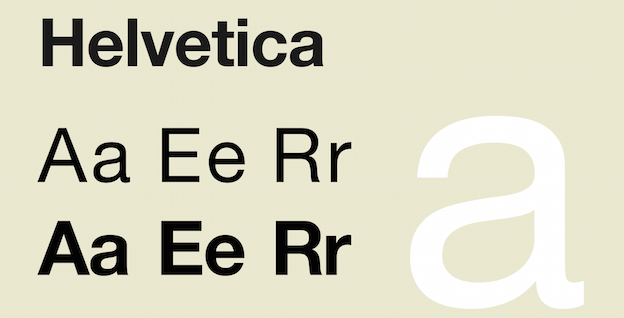
ALL CLASSES ARE WEDS 09:15 -12:45 PM
Don’t scroll past this!
This course is structured in 4 phases to help students prepare and plan a self-directed creative project. Please read this page carefully. you will see that this course is cumulative. You will first gain skills, and then apply those skills along with the knowledge you pick up through the weekly readings. Each phase has been planned specifically so that you can more easily plan your work. Planning is important in any design project, and this one is no different.
Reaching out for help will be important for you in this course. Students regularly report that they wished they had reached out more to me for help. I want to encourage all of you to remember this core principle: if you spend too much time thinking about the tool you are using, you will not think about the design and this will almost always produce a weaker design, and leave you disappointed. None of us want that. If you are in need of any help – reach out!
I will always be available for questions, consultation, and help after class finishes. I also am available to help throughout the week either during office hours or via zoom.
Schedule Overview
WEEKS 1-6: LEARNING SOFTWARE SKILLS

Feb 15th, 22nd, March 1st, 8th, and 15th
Many students take this course with little to no software skills or experience, making it necessary to devote the first six weeks of the course to front-loading skills acquisition and training. Students will need to become proficient in the graphics software used to make the projects for the course. There is a steep learning curve in this phase of the course; students will be learning two software applications simultaneously instead of sequentially (Adobe Illustrator & Photoshop), and to a much lesser degree, students will use InDesign. One of the things that students gain in this course is an understanding and appreciation of the value of workflow; Learning different software simultaneously helps students develop thier workflow, making thier work more efficient. Learning in this manner helps students understand the specific strengths and uses that each application has because you can do so by comparison. Fortunately, Adobe has designed the software in such a way that the interfaces and tools have a standardized GUI (Graphical User Interface), so learning each one is no longer another mountain to climb.
The accordions below contain more information about the work you are expected to produce this semester. Click each header to open it. As stated elsewhere, the full detail of these phases is being purposefully occluded from you right now in an effort to help you develop the basic skills necessary to be able to make the designs you want later in the course. The project brief will be distributed during class on week 5.
There are two texts students will use continually throughout the semester:
- Design Dictionary, Michael Erlhoff, Tim Marshall (Eds.), Board of International Research in Design (Available freely online at www.academia.edu – I will make sure you have access to this resource.)
- Creating A Brand Identity, Catharine Slate-Brooking (available as an e-book via the library
Weeks 7-10: ASSIGNED PROJECT

March 22nd, 29th, April 5th, April 12th
In this phase of the course, students are assigned a project, and given wide latitude to begin to apply their design learning and skills. Students will continue gaining software skills – eventually learning tools/techniques that are specific to their own work. Students will begin to develop their work through research. In part this should include some use/reference to the readings and to how those readings are represented aesthetically through different design forms. Research in this class is done through design work made by students that could be thought of like essay preparatory notes. The distinction is that the ‘notes’ are drawings, renderings, type work, colour tests, and compositing of design ideas in addition to written ones. All students will have a space on a public board. All work made is posted to the board. This is an important part of the design process – critique. In an art course, critique is done by sharing visual material in some form. Students that are not used to art courses can sometimes feel apprehensive about sharing visual material openly. This is very common and is usually related to a self-perception of skill level. That is why we spend 6 weeks focusing on skills to enable students with the skills to make the work. This phase starts to apply those skills. The motto is: if you’re thinking about the tools, you’re not making design. There will be some group work involved in this phase as students develop ideas and share productivity tips.
WEEKS 11-14: SELF-SELECTED PROJECT

April 19th, 26th, May 3rd, 10th, 17th
The last phase of the semester challenges students to self-select and manage a medium-duration (4 weeks) project of their own. Students will have the opportunity to use all of the technical skills learned while benefitting from and using the design principles studied in the readings. Students by now have gained enough experience in critique to be able to review and critically appraise their own work. This is essential for students to be able to revise or remake the work as appropriate. There will be less reading and no exercises in this phase as we progress to the end of the semester. Students will devote all of the time usually spent on reading and homework (an extra 4-6 hours/week) towards the final project. There will be some group work, offering students the ability to share out and gain feedback, get design and/or research help and skills or resource advice.
Soft Deadlines: A soft deadline is used to give you a sense of what constitutes the final critique, gain feedback from peers, and made the adjustments to your work that are appropriate. These dates are noted in advance, and there will be reminders to help you work towards them. There is one soft deadline in Week 11 and another in Week 14.
May 17 – Final Critique.
For the final critique, students will have produced a fully-formed and complete design proposal. Students will present the finished work to the class as if the class is a client. The process of this class session will be described in a handout distributed in the weeks prior to the final. The class will respond to each other’s presentations using critical thinking, aesthetic awareness, and some information gathered in the readings.
